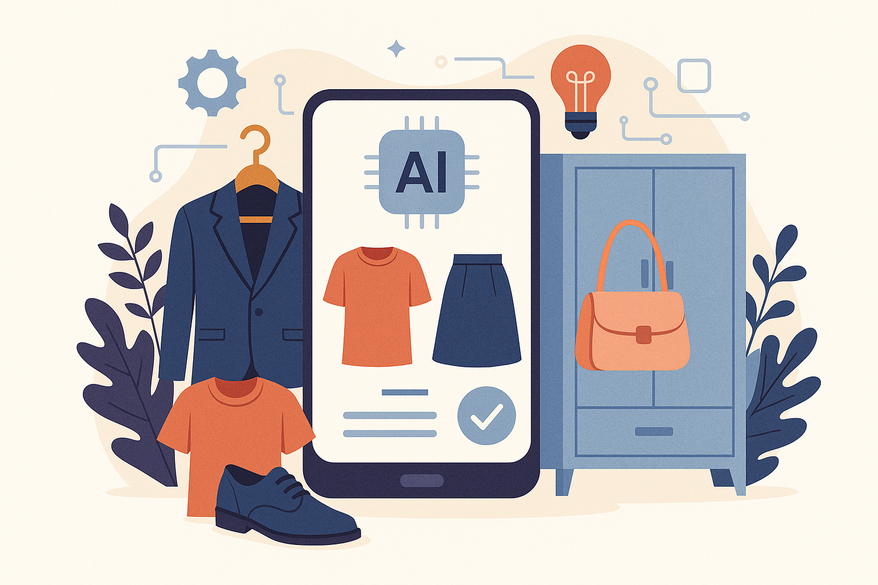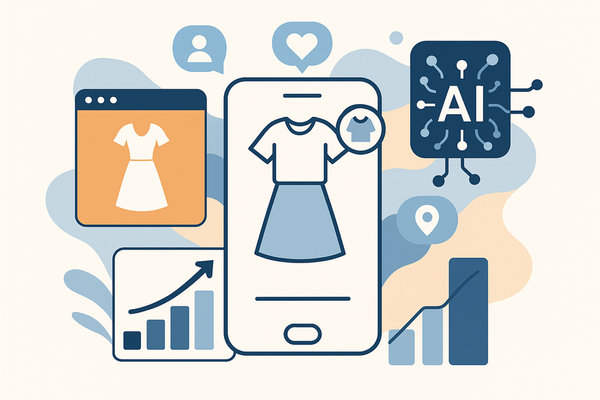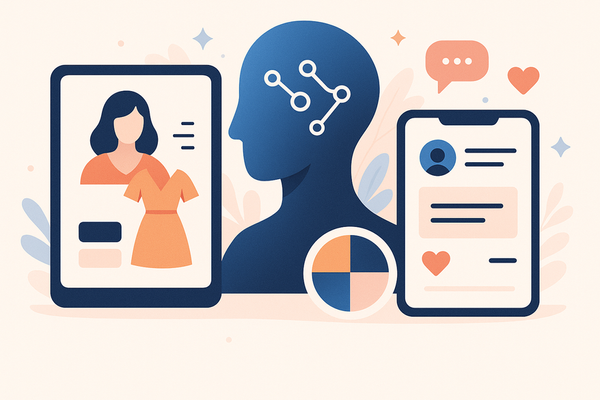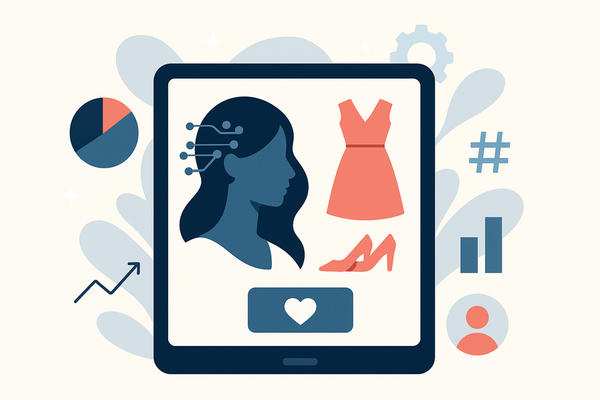How an Automatic Outfit Pairing App Transforms Your Wardrobe
Discover how an automatic outfit pairing app uses AI to transform your wardrobe, offering personalized style suggestions, convenience, and enhanced creativity.

Estimated reading time: 6 minutes
Key Takeaways
- AI-driven styling: Automates wardrobe analysis and suggests personalized outfit combinations.
- Time and creativity boost: Saves decision fatigue and uncovers unexpected pairings.
- Core features: Virtual wardrobe scanning, daily recommendations, calendar integration, social sharing.
- Considerations: Accuracy, data privacy, customization options, and potential limitations.
- Future trends: AR try-on, dynamic trend integration, sustainability insights, omni-platform connectivity.
Table of Contents
- What Is an Automatic Outfit Pairing App?
- How an Automatic Outfit Pairing App Works (Step-by-Step Technical Flow)
- Benefits of Using an Automatic Outfit Pairing App
- Key Features and Functionalities
- Considerations When Choosing an App
- Future Trends and Innovations
- Conclusion
- FAQ
What Is an Automatic Outfit Pairing App?
An automatic outfit pairing app is a digital application that automates outfit assembly by scanning your wardrobe items and applying AI-driven style rules. Core functions include:
- Wardrobe cataloging via image recognition – Tags item type, color, pattern, and brand using computer vision.
- AI/ML engine for suggestions – Recommends combinations based on your taste, calendar events, and weather.
- Integration with popular tools – Works alongside apps like Fits Outfit Planner.

How an Automatic Outfit Pairing App Works (Step-by-Step Technical Flow)
Under the hood, these apps rely on a multi-stage pipeline to deliver seamless styling suggestions.
Step 1 – Data Input
- User uploads photos or drags-and-drops clothing images.
- Optionally enters metadata: fabric, brand, and preferred occasions.
- Image recognition via Convolutional Neural Networks detects attributes like type, color palette, and texture.
Step 2 – Data Processing
- Machine learning models classify items into style categories (casual, formal, sporty).
- A feedback loop (thumbs-up/down) refines model weights through reinforcement learning.
Step 3 – Outfit Generation
- Recommendation engine uses collaborative filtering and rule-based constraints.
- Integrates weather APIs and calendar data for occasion-based looks.
Step 4 – Delivery & Feedback
- In-app notifications or daily digest emails present outfit options.
- User selections and edits further train the algorithm for better future suggestions.
Benefits of Using an Automatic Outfit Pairing App
Time-Saving & Convenience
- Eliminates morning decision fatigue by presenting ready-to-wear outfits.
- Reduces time spent browsing in your closet or online.
Enhanced Creativity
- AI uncovers non-obvious pairings like mixed patterns or bold color contrasts.
- Expands your style horizons and freshens your look.
Personalization
- Adapts suggestions to your existing wardrobe and style profile.
- Learns your preferences over time through continuous feedback.
Better Fashion Choices
- Tracks wear frequency and cost-per-wear analytics.
- Informs smarter purchase decisions and maximizes ROI on clothing.
Wardrobe Organization
- Provides a digital closet overview for packing and daily planning.
- Prevents duplicate buys by showing what you already own.
Key Features and Functionalities of an Automatic Outfit Pairing App
Virtual Wardrobe Scanning
- Auto-cropping and background removal.
- AI-powered tagging of color, pattern, season, and fabric.
Style Algorithms & Daily Recommendations
- Rule engine versus pure ML – set custom style rules (e.g., “no red with pink”).
- Generates daily looks by blending algorithmic suggestions with manual overrides.
Calendar & Trip Planning Tools
- Schedule outfits for work, events, or vacations.
- Packing assistant creates day-by-day looks and packing lists.
Social & E-commerce Integration
- Share curated looks to Instagram or Pinterest.
- Direct links to buy missing items or sell preloved pieces.
UX/UI Considerations
- Drag-and-drop interfaces for easy outfit edits.
- Quick-swipe approvals and in-app chatbots for style tips.
Considerations When Choosing an Automatic Outfit Pairing App
Accuracy & Learning Curve
- Look for apps with continual learning and active feedback prompts.
- Ensure recommendations refine based on your approvals and edits.
Privacy & Data Security
- Confirm end-to-end encryption of your wardrobe photos.
- Review clear data-use and privacy policies.
Customization Options
- Override AI picks and set up custom capsule wardrobes.
- Tag items by event, mood, or type for precise filtering.
Potential Drawbacks & Limitations
- Early-stage apps may give repetitive suggestions.
- Uncommon or vintage items can confuse some algorithms.
Tips for Maximizing Use
- Regularly update your digital closet with new additions.
- Engage community galleries for fresh inspiration.
- Use feedback tools consistently to improve AI accuracy.
Future Trends and Innovations in Automatic Outfit Pairing Apps
Advanced AI Styling
- Context-aware models that factor in personal schedules and social media trends.
- Robotic process automation (RPA) sync with smart closets.
Augmented Reality (AR) Try-On
- Uses ARKit and ARCore to let you “try on” outfits virtually before buying.
Dynamic Trend Integration
- Real-time scraping of fashion week runways and street style feeds.
- Algorithms adjust to global style shifts and seasonal trends.
Sustainability & Circular Fashion Insights
- Analytics for underused items and cost-per-wear metrics.
- Prompts for secondhand swaps and reselling to extend garment life.
Omni-Platform Connectivity
- Seamless handoff from suggestion to purchase, social share, and calendar event creation.
- API integrations across fashion marketplaces and social networks.
Conclusion
An automatic outfit pairing app merges the power of AI with personal style management. These tools define your wardrobe, automate outfit assembly, and learn your taste day by day. They solve indecision, boost creativity, and streamline wardrobe organization for smarter, faster dressing. By exploring these apps, you can unlock new style combinations and make the most of every item you own.
For personalized wardrobe analytics and AI-powered style reports, check out Maxx Report. Whether you need daily outfit suggestions or deep-dive looks analysis, the app has you covered.
Share your experience with automatic outfit pairing apps in the comments below. Subscribe for more fashion-tech insights and stay ahead in smart styling with the latest innovations.
FAQ
What platforms support automatic outfit pairing apps?
Most apps are available on iOS and Android, with some offering web dashboards for desktop users.
How secure is my wardrobe data?
Top solutions use end-to-end encryption and transparent privacy policies to safeguard your photos and metadata.
Can I override AI suggestions?
Yes—customization features let you set style rules, tag items, and build capsule wardrobes manually.
Do these apps work offline?
Basic browsing of your catalog may work offline, but AI-driven suggestions often require an internet connection.
Is there a free version?
Many apps offer limited free tiers, with premium plans unlocking advanced features like AR try-on and trend integration.





